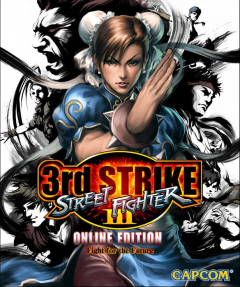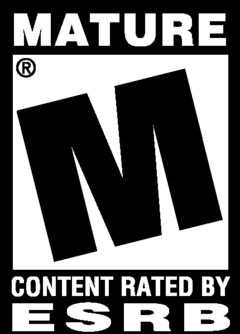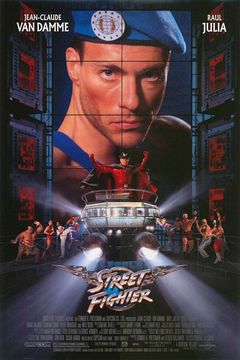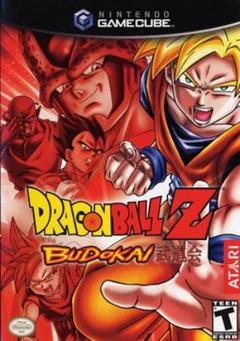fighter
Divekick
Sometimes the simplest things in life can be the best. And while sometimes you need fifteen buttons to play a game, sometimes you only need two. Today we'll be reviewing the two-button fighting game, Divekick. Originally envisioned and created by a tiny team of gamers in the fighting game community, Divekick seeks to break down the complex fighting game into a single move, a jumping downwards kick (or divekick). First conceived very late at night after a tournament ("hey, wouldn't it be hilarious to make a game where you can only divekick?"), it ran through a successful kickstarter campaign, cancelled that campaign since they found a publisher, successfully got greenlit on Steam, and now released on Steam/PSN/Vita. Not bad at all for its origins.
Street Fighter III: Third Strike Online Edition - Video
 I have a soft spot for fighting games. Even though my multiplayer game
time has dwindled to almost nothing, I relish the chopsocky action too
much to quit entirely. My interest has further grown alongside the
genre's worldwide revival, sparked by 2009's Street Fighter IV, which
produces more and more games that exhibit extravagant martial arts
action with tournament balance. This pleases me.
I have a soft spot for fighting games. Even though my multiplayer game
time has dwindled to almost nothing, I relish the chopsocky action too
much to quit entirely. My interest has further grown alongside the
genre's worldwide revival, sparked by 2009's Street Fighter IV, which
produces more and more games that exhibit extravagant martial arts
action with tournament balance. This pleases me.
Not content to milk just Street Fighter IV year after year, Capcom's digging deeper into its past to re-release what many consider its finest fighter, Street Fighter III: Third Strike. The fan favorite finds its way onto Xbox Live Arcade and PlayStation Network as Street Fighter III: Third Strike Online Edition, adorned with bells and whistles that appear to go beyond what fans would expect from a modern port. SF3:TSOE boasts visual filters, remixed music, concept art, detailed tutorials, expert trials, Youtube match uploads, and even renowned GGPO netcode that promises smooth and customizable online performance.
I have played Third Strike a few times in days long past. I remember some of the game-specific basics, like parrying, but am unfamiliar with most characters. I'll see what the trials can teach me about the game's mechanics beyond parrying. Next, I'll see what trials are available for Dudley, a boxer I recognize from Super Street Fighter IV but have never used in Third Strike. Finally, I'll check out Arcade mode and see what the game has to offer as a singleplayer experience.
Check out five minutes of parries, Corkscrew Blows, and everything else that makes up gentlemanly fighting.
Super Street Fighter IV Impressions
 As mentioned in my previous article,
Street Fighter 4 has become THE fighting game phenomenon of recent
years, and with good reason. Released to consoles early 2009 and
backed by a fantastic media campaign, Capcom gave fans a stunning,
well-balanced mix of old and new. Refreshing the memories of old
fans while simultaneously creating new ones, the fighting game was
resurrected.
As mentioned in my previous article,
Street Fighter 4 has become THE fighting game phenomenon of recent
years, and with good reason. Released to consoles early 2009 and
backed by a fantastic media campaign, Capcom gave fans a stunning,
well-balanced mix of old and new. Refreshing the memories of old
fans while simultaneously creating new ones, the fighting game was
resurrected.
Its update/sequel/expansion recently hit stores in April, offering new characters, new ultras, and a fantastic replay system along with improved online matchmaking and play. As I do not actually own a copy of the game, this article will only be my initial impressions on these topics. Currently released on 360 and PS3, an arcade version is planned for the near future, with a PC version yet unannounced and conspicuously absent.
Tatsunoko vs. Capcom: Ultimate All-Stars
Tatsunoko vs. Capcom: Ultimate All-Stars is the latest installment in the crossover series developed by Eighting and published by Capcom. Originally released in Japan more than a year ago (Dec 11, 2008), Tatsunoko vs. Capcom is finally making it's stateside debut January 26th, 2010.
You may be asking yourself, "Who the heck are these Tatsunoko characters?". I myself am asking this same question as I venture into this unknown universe. To my current knowledge, it is basically one of the grandfather anime production studios that really took off in the 80s and early 90s in Japan. Most of their work made it overseas with the likes of Samarai Pizza Cats, G-Force, and Robotech. If you grew up with cartoons in the 90s, there is a chance you will run across some familiar faces here (though you may have forgotten their names).
Capcom took a huge gamble bringing such an unknown universe stateside. To put the odds in their favor, the game has gained a few critical changes. First off, online match making has been included. Secondly, at the cost of losing one character from the original Japanese game due to licensing issues (see Hakushon Daimaō), Capcom has graciously added five new playable characters to the international version of the game.
This game was never originally planned to make it over here. I was able to play the title while I was over in Japan a year ago and was super excited to hear Capcom was putting so much effort into bringing it overseas. The game definitely warrants a purchase and fills the empty void of 2D fighters (with online) on the Wii. Hopefully word gets out about this game because I have a feeling it's going to be an uphill battle. I've lived in Japan for two years and I still don't know who half these Tatsunoko characters are.
Street Fighter IV
What more can one say about Street Fighter? As explained in my previous review of Street Fighter: The Movie, the franchise is one of the most popular in gaming history and has permeated almost all aspects of society. It requires little backstory here, so let's head straight to the latest iteration.
Street Fighter IV released in arcade around the fall of 2008, with console ports the following February. Through hype, word of mouth, relatively balanced play, online play and catering to players of all skill levels, the game was a smash and is now a phenomonon of no other in the fighting game world, aside from the original SFII and perhaps Marvel vs Capcom 2. With new hybrid 3d celshaded graphics, dazzling ultra moves and a cast of old favorites along with new contenders, players of all different types and generations flocked to the new release. Its expansion, Super Street Fighter IV is on its way (currently slated for spring), and the franchise shows no signs of slowing.
So what exactly is so good about the game and why does it appeal to so many people? It seems like they made almost every decision and move to connect the past and the future, to leave no one behind while still progressing as a series.
Street Fighter: The Movie... (The Game?)
Ah, yes, the Street Fighter movie. No good phenomenon is safe from Hollywood's prying eyes, and Street Fighter was no exception. Street Fighter II was released in arcades in 1991, on consoles in 1992, and it quickly became a smash. Supremely polished with well-balanced 1v1 play, SFII jump-started the fighting game craze of the 90s, packing arcades as well as basements around the world. Capcom ultimately released 5 or so additional iterations of the game before moving on to Street Fighter Alpha and a continuation of the numbered series (along with a puzzle game, a simplified for-kids title and an outsourced 3d line).
Along with Street Fighter mania arrives the inevitable movie deal. Starring the Muscle from Brussels himself, the movie was pitched and billed as a good vs. evil tale. At this time, the Street Fighter storyline was not fully set it stone out and the screenwriters' eyes gleamed to this, taking heavy liberties with the plot arc and character backstories. It essentially took each the characters from Super Street Fighter II (minus Fei Long, who was somehow twisted into Captain Sawada). Each were then designated as either good or evil (allowing for swaps along the way) and they seemingly wrapped a story around that.
Dragon Ball Z: Budokai
Everyone should have heard of Dragon Ball Z, the famous anime based on the manga by Akira Toriyama. It's the second part of the series (preceded by Dragon Ball), and the most famous. It follows the adult life of Goku as he grows more powerful and gets in fights with aliens.
Dragon Ball Z has such loyal fans that any game with the Dragon Ball Z moniker automatically sells well, no matter how bad. This is what licensed games are all about: making money on the strength of the brand instead of the strength of the game.
Then along came Dragon Ball Z: Budokai (which basically means "tournament") for the Playstation 2. It sold exceptionally well, even for DBZ, so Atari decided to update the graphics and release it on the Nintendo GameCube, where it went on to sell over a million copies and become Player's Choice.
The GameCube version is the preferred release, as the developer Dimps took the opportunity to implement cel-shading, making the game look more like the anime than the Playstation 2 version. I will be playing the GameCube version.
What I want to know is this: is this game worthy of its Player's Choice status, or did DBZ just have a million fans ready to pay for anything with Goku on the front? Will this game be fun for those without prior knowledge of the story, or will you have to be a devoted fan to get anything out of it?
Nintendo DS M-Rated Blitz
 There are a total of six released M-rated Nintendo DS games: Grand Theft Auto: Chinatown Wars, theresia, Ultimate Mortal Kombat, Dementium: The Ward, Touch the Dead, and Resident: Evil Deadly Silence (one more game, C.O.R.E. has been rated but not released yet). For over 1100 rated titles on the Nintendo DS, there are just six games considered Mature by the ESRB! That's about one half percent of all DS games. Kotaku has some theories on this, but I'm not really one to analyze the market or audiences - I'm one to play the dang games.
There are a total of six released M-rated Nintendo DS games: Grand Theft Auto: Chinatown Wars, theresia, Ultimate Mortal Kombat, Dementium: The Ward, Touch the Dead, and Resident: Evil Deadly Silence (one more game, C.O.R.E. has been rated but not released yet). For over 1100 rated titles on the Nintendo DS, there are just six games considered Mature by the ESRB! That's about one half percent of all DS games. Kotaku has some theories on this, but I'm not really one to analyze the market or audiences - I'm one to play the dang games.
The following is going to be a 10 minute blitz of each of the six released M-rated games for the Nintendo DS, starting with the first released, Resident Evil: Deadly Silence, and finishing up with the recent Grand Theft Auto. I already had a friend review the first hour of Chinatown Wars, but a little overlap is okay. I'll say a few things about each game, play it for ten minutes, and then wrap each up with a few more notes about gameplay. I'll also decide if the first 10 minutes are worthy of the M-rating or not. Let's get this started.
This is also a taste of the new first hour review format. Less about numerical scores, more about what I liked and what I didn't. The reviews will be a bit more fleshed out next week as I have more room to roam. Enjoy.





